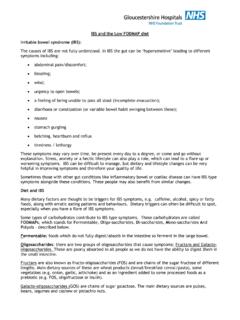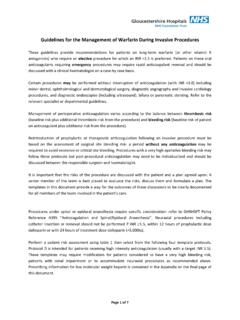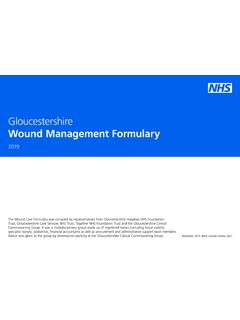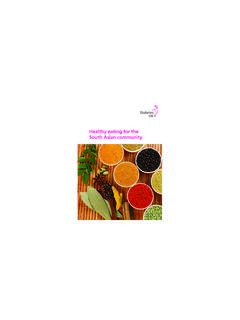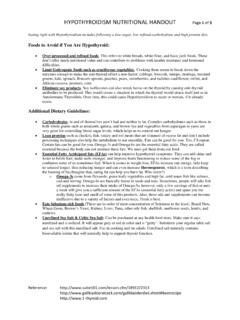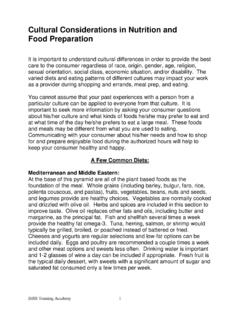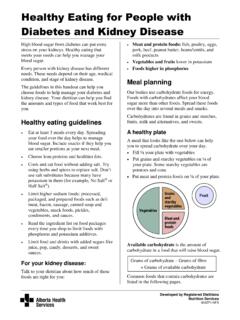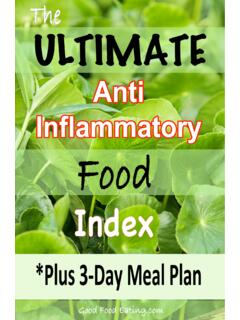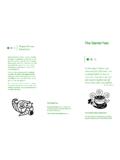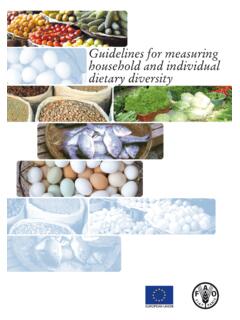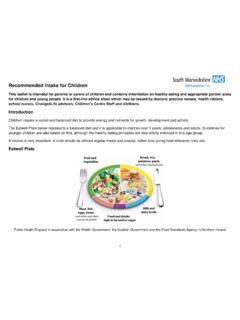Transcription of The Low FODMAP diet
1 IBS and the Low FODMAP diet Irritable bowel syndrome (IBS): The causes of IBS are not fully understood. In IBS the gut can be hypersensitive leading to different symptoms including: abdominal pain/discomfort; bloating; wind; urgency to open bowels; a feeling of being unable to pass all stool (incomplete evacuation); diarrhoea or constipation (or variable bowel habit swinging between these); nausea stomach gurgling belching, heartburn and reflux tiredness / lethargy These symptoms may vary over time, be present every day to a degree, or come and go without explanation.
2 Stress, anxiety or a hectic lifestyle can also play a role, which can lead to a flare up or worsening symptoms. IBS can be difficult to manage, but dietary and lifestyle changes can be very helpful in improving symptoms and therefore your quality of life. Sometimes those with other gut conditions like inflammatory bowel or coeliac disease can have IBS type symptoms alongside these conditions. These people may also benefit from similar changes. diet and IBS Many dietary factors are thought to be triggers for IBS symptoms, caffeine, alcohol, spicy or fatty foods, along with erratic eating patterns and behaviours.
3 Dietary triggers can often be difficult to spot, especially when you have a flare of IBS symptoms. Some types of carbohydrates contribute to IBS type symptoms. These carbohydrates are called FODMAPs, which stands for Fermentable, Oligo-saccharides, Di-saccharides, Mono-saccharides And Polyols described below. Fermentable: foods which do not fully digest/absorb in the intestine so ferment in the large bowel. Oligosaccharides: there are two groups of oligosaccharides that cause symptoms; Fructans and Galacto-oligosaccharides.
4 These are poorly absorbed in all people as we do not have the ability to digest them in the small intestine. Fructans are also known as fructo-oligosaccharides (FOS) and are chains of the sugar fructose of different lengths. Main dietary sources of these are wheat products (bread/breakfast cereal/pasta), some vegetables ( onion, garlic, artichoke) and as an ingredient added to some processed foods as a prebiotic ( FOS, oligofructose or inulin). Galacto-oligosaccharides (GOS) are chains of sugar galactose.
5 The main dietary sources are pulses, beans, legumes and cashew or pistachio nuts. Disaccharides: Lactose is a sugar found in all animal milks. Milk and yogurt are main sources of lactose Monosaccharides: Fructose is a simple sugar but in excessive amounts may be poorly absorbed by some. And Polyols: Polyols are sugar alcohols such as sorbitol, mannitol and xylitol. These are poorly absorbed in most people. These occur naturally in some fruits and vegetables, but are also used as artificial sweeteners in sugar free chewing gum, mints, and other low calorie or sugar free products.
6 Even though some FODMAPs are poorly absorbed in everyone, they only need to be restricted if they cause symptoms. People with IBS-like symptoms appear to be sensitive to the gases produced and water changes in the large intestine that occur when the diet contains lots of FODMAPs. Reducing the intake of FODMAP s has been shown to improve gut symptoms in most individuals with IBS-like symptoms. Following the diet : How strict do I need to be? Try to follow the low FODMAP diet as closely as possible to give you the best chance to improve your symptoms.
7 Usually 4-6 weeks is long enough to identify if symptoms will respond to a low FODMAP diet . After the initial 4-6 weeks it is important that you reintroduce the avoided foods to identify which particular groups of carbohydrate cause you symptoms. Sensitivity to FODMAPs varies between people, and reintroduction to FODMAP containing foods is often well tolerated. Although a low FODMAP diet can be nutritionally balanced, working out what you are most sensitive to helps to increase food choices in your diet .
8 The tables below provide an overview of the foods needing to be avoided and those that can be eaten whilst following a low FODMAP diet . It is not an exhaustive list. Further details on other foods and safe quantities can be found on the Monash University or low FOMDAP food maestro apps: (scroll down to bottom half of the webpage) The foods listed below do not contain any FODMAPs and may be eaten freely: Meat, poultry, fish, eggs or vegetarian protein foods. Eat 1-2 portions per day. One portion is 75-100g or 2 eggs.
9 Fresh and frozen without sauce or coating: beef, chicken, duck, lamb, pork (including bacon and ham), turkey. Fresh or frozen shellfish, white fish, oily fish. Tinned fish in brine or oil. Eggs (boiled, fried, poached, scrambled). Firm tofu, tempeh. Quorn (Check ingredients: some varieties contain onion and/or garlic) Textured vegetable protein (soya mince) Fats, oils & spreads For a healthy diet try eating less foods containing fat. Fats are high in calories so use sparingly, and can contribute to IBS symptoms in some people.
10 Chose polyunsaturated or monounsaturated where possible. Cooking oils, margarines, low fat spreads, butter, ghee, lard, suet. Starchy Foods Minor wheat ingredients in a food do not need to be avoided ( thickeners and flavourings). Foods to avoid (high in fructans, GOS or polyols): Suitable foods But check ingredients label for problem fruit, FOS, inulin, oligofructose. Cereal Grains - Wheat (including bulghur wheat, couscous, semolina) - Rye, - Barley - Amaranth Cereal grains and starchy foods Rice (and rice bran), oats (and oat bran), tapioca, potatoes, buckwheat, polenta, corn, quinoa Bread All wheat bread and rolls.



